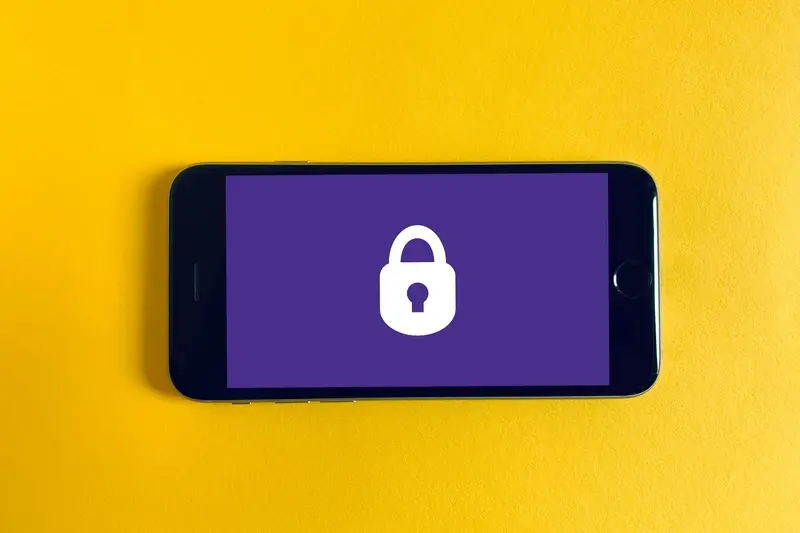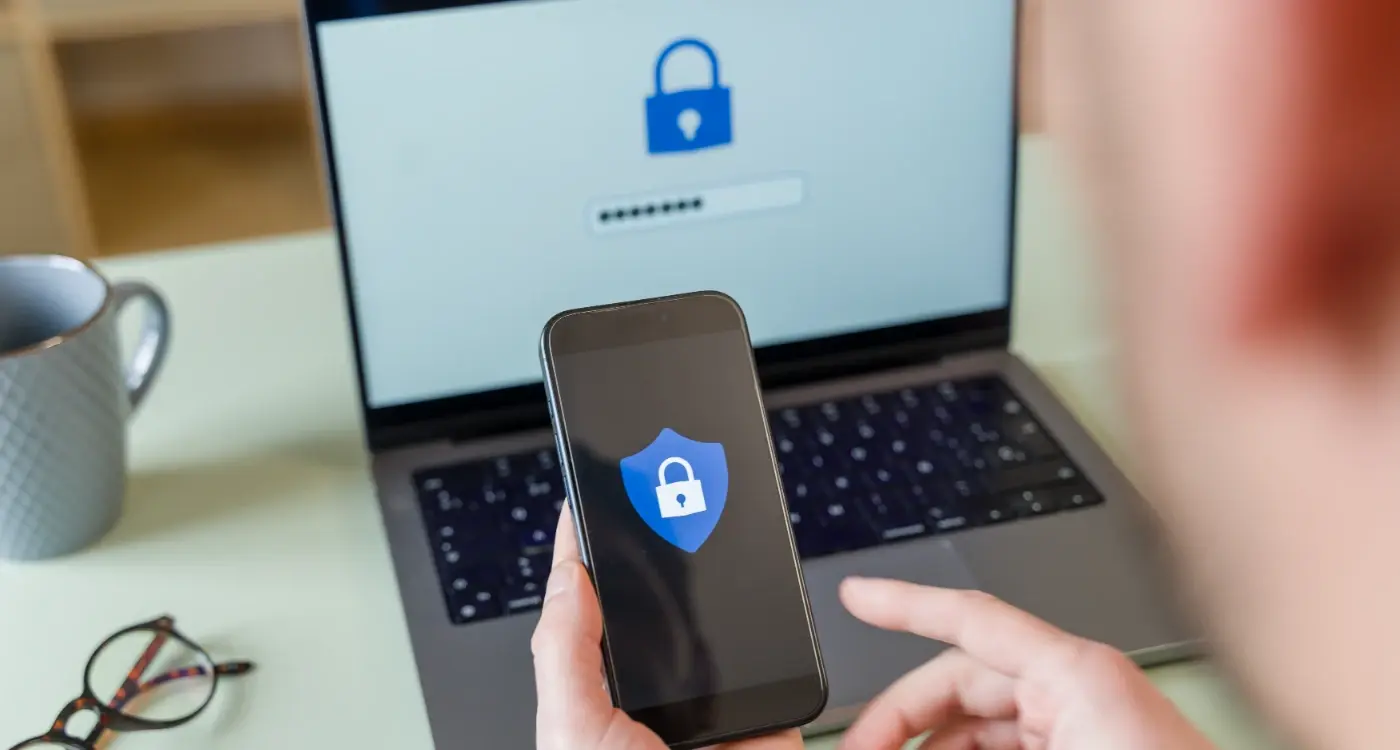How to Implement Multi-Layer Security in Business Apps?
Have you ever wondered what would happen if hackers broke into your business app and stole all your customer data? It's a scary thought, but one that keeps many business owners up worrying. The truth is, basic security just isn't enough anymore—hackers are getting smarter, and a single password or firewall won't protect your business app from the threats out there.
This is where multi-layer security comes in. Think of it like having multiple locks on your front door, a security system, and a guard dog all working together. In the app world, we call this enterprise security architecture, and it's become the gold standard for protecting business applications. Instead of relying on just one security measure, we build several layers of protection that work together to keep your app and data safe.
Security is not a product, but a process that requires multiple defensive layers working in harmony to protect against evolving threats.
Over the next chapters, we'll walk you through each layer of this security approach—from secure coding practices and mobile app encryption to user authentication and monitoring systems. You'll learn practical steps to protect your business app without getting bogged down in technical jargon. By the end, you'll understand exactly how to build a fortress around your application that can stand up to modern cyber threats.
Understanding Multi-Layer Security Architecture
Think of multi-layer security like wrapping a present with several boxes inside each other. Each box makes it harder for someone to get to what's inside. That's exactly how we protect business apps—we don't rely on just one security measure, we stack them up.
What Makes Multi-Layer Security Work
The beauty of this approach is that if one layer fails, the others are still there protecting your app. We call this defence in depth, and it's been keeping apps safe for years. Your first layer might be user authentication—making sure only the right people get in. Then you've got encryption protecting the data itself, followed by secure communication channels, and monitoring systems watching for trouble.
Building Your Security Stack
Each layer serves a different purpose and protects against different threats. Authentication stops unauthorised users; encryption protects your data even if someone gets past the login; secure networks prevent eavesdropping; and monitoring catches problems before they become disasters. When you combine all these layers, you create something much stronger than any single security measure could ever be. That's the real power of multi-layer architecture—it doesn't just make your app secure, it makes it resilient.
Authentication and Access Control Systems
Authentication sits right at the heart of your business app security—it's the gatekeeper that decides who gets in and who doesn't. I can't tell you how many times I've seen companies treat this as an afterthought, only to regret it later when their data gets compromised. Your authentication system needs to verify that users are exactly who they claim to be, whilst your access control determines what they can do once they're inside.
Never rely on a single authentication method for business apps. Multi-factor authentication should be your baseline, not your gold standard.
Building Strong Authentication Layers
Multi-layer security means stacking different authentication methods on top of each other. Start with something users know (passwords), add something they have (phones for SMS codes), and include something they are (fingerprints or face recognition). Each layer makes it exponentially harder for unauthorised users to break through your defences.
Role-Based Access Control
Once someone's authenticated, you need granular control over what they can access. Role-based permissions let you assign specific capabilities to different user types—your accountants don't need access to HR records, and your sales team shouldn't see financial projections.
- Implement principle of least privilege access
- Use time-based session tokens that expire automatically
- Log all authentication attempts and access patterns
- Enable account lockouts after failed login attempts
- Provide secure password recovery mechanisms
Data Encryption and Storage Protection
Data encryption is like having a secret code that only you and your app can understand. When someone stores their personal information in your business app—whether that's their name, email, or payment details—you need to scramble it up so badly that even if hackers get hold of it, they can't make sense of what they've stolen.
There are two main types of encryption you'll want to use. Data at rest encryption protects information when it's sitting quietly in your database, whilst data in transit encryption protects it when it's moving around between your app and your servers. Think of it as putting your data in a locked box when it's stored away, and then putting that same box inside an armoured truck when it needs to travel somewhere.
Storage Security Methods
Your app will likely store different types of data, and each needs its own level of protection. User passwords should never be stored in plain text—always hash them using strong algorithms like bcrypt. Sensitive business data needs AES-256 encryption, which is military-grade protection that would take computers millions of years to crack.
- Use device keychain services for storing authentication tokens
- Implement database-level encryption for all sensitive records
- Apply file-level encryption for documents and media files
- Enable automatic encryption for cloud storage backups
Key Management Best Practices
Managing your encryption keys properly is absolutely critical—losing them means losing access to your own data forever. Store encryption keys separately from encrypted data, rotate them regularly, and use hardware security modules when possible. Many developers make the mistake of hardcoding keys into their app code, which is like leaving your house key under the doormat with a sign pointing to it.
Secure Network Communication
When your business app talks to servers and other systems, it's like having a private conversation in a crowded room—everyone can listen in unless you take the right precautions. Network security forms the backbone of any robust multi-layer security approach; without it, all your other security measures become meaningless.
The foundation starts with HTTPS everywhere. Not just for login pages or payment forms, but for every single request your app makes. This encrypts all data travelling between your app and your servers, making it unreadable to anyone trying to intercept it. Certificate pinning takes this a step further by making sure your app only trusts specific certificates, preventing man-in-the-middle attacks even when someone tries to use fake certificates.
API Security Measures
Your APIs need proper authentication tokens that expire regularly. OAuth 2.0 and JWT tokens work well here, but they must be implemented correctly. Securing your API from unauthorised access requires rate limiting to prevent attackers from overwhelming your servers with requests, whilst input validation at the network level catches malicious data before it reaches your application logic.
Network security isn't about building higher walls—it's about making sure the right people can get through whilst keeping everyone else out
Don't forget about monitoring network traffic patterns. Unusual spikes in requests, repeated failed authentication attempts, or requests coming from suspicious locations can all indicate security threats that need immediate attention.
Application Code Security Best Practices
Writing secure code isn't just about following rules—it's about building apps that won't fall apart when someone tries to break them. After years of working with development teams, I can tell you that most security issues come from simple mistakes that could have been avoided.
The biggest problem I see is developers who assume their code will only be used the way they intended. That's dangerous thinking. Attackers will try everything—entering weird characters, sending too much data, or accessing parts of your app they shouldn't reach.
Core Security Practices
Start with input validation on everything users can type or upload. Never trust data coming from outside your app, whether it's from users, other systems, or even your own database. Clean it, check it, and reject anything that looks suspicious.
- Validate all user inputs before processing them
- Use prepared statements for database queries to prevent injection attacks
- Keep your libraries and frameworks updated regularly
- Store passwords using proper hashing methods, never in plain text
- Log security events but never log sensitive information like passwords
Testing Your Security
Regular security testing catches problems before attackers do. Ensuring your app remains secure requires running automated scans, testing with unusual inputs, and having someone else review your code. Two pairs of eyes always spot more issues than one.
User Interface and Input Validation Security
The user interface might seem like the friendliest part of your business app, but it's actually one of the most dangerous entry points for attackers. Every text box, dropdown menu, and upload button represents a potential gateway for malicious code if not properly secured. This layer of multi-layer security focuses on making sure that whatever users put into your app won't break it or compromise your enterprise security architecture.
Input validation works like a strict bouncer at a club—it checks everything coming through the door before letting it inside your app. When users type information into forms or upload files, your validation system needs to verify that the data matches what you expect. Numbers should actually be numbers, email addresses should follow the correct format, and file uploads shouldn't contain hidden scripts.
Common Input Validation Threats
The most frequent attacks happen when bad actors try to inject harmful code through input fields. SQL injection attacks slip database commands into text boxes; cross-site scripting attempts embed malicious JavaScript; and buffer overflow attacks try to crash your app by sending too much data. Your secure coding practices need to catch these before they reach your app's core systems.
| Attack Type | Target | Prevention Method |
|---|---|---|
| SQL Injection | Database queries | Parameterised queries |
| Cross-site scripting | Web interfaces | Output encoding |
| Buffer overflow | Memory allocation | Input length limits |
Building Strong Validation Rules
Your validation system should work on both the client side (immediate feedback for users) and server side (the real security check). Client-side validation helps users fix mistakes quickly, but server-side validation is where your business app security actually happens. Never trust what comes from the user's device—always validate everything again on your servers.
Use whitelist validation instead of blacklist validation. Rather than trying to block all the bad things (which you'll never catch completely), define exactly what good input looks like and reject everything else.
Security Monitoring and Incident Response
Building security into your business app is only half the battle—you need to watch what's happening once it's live. Think of security monitoring like having a security guard who never sleeps; it's constantly checking for suspicious activity and unusual patterns that might signal trouble.
Real-time monitoring tools can spot things like multiple failed login attempts, unusual data access patterns, or requests coming from strange locations. When something doesn't look right, your monitoring system should flag it immediately. The key is setting up alerts that tell you about genuine threats without drowning you in false alarms—nobody wants their phone buzzing every five minutes about nothing!
Building Your Response Plan
When a security incident happens (and it probably will at some point), you need to know exactly what to do. Having a clear incident response plan means you can act quickly instead of panicking. This includes knowing who to contact, how to contain the problem, and what steps to take to protect your users' data.
Learning from Problems
After dealing with any security issue, take time to understand what went wrong and how to prevent it happening again. Keep logs of security events—they're invaluable for spotting trends and improving your defences. Measuring your app's security effectiveness through regular audits helps you stay ahead of potential problems rather than just reacting to them.
Conclusion
Building robust multi-layer security for business apps isn't something you can do halfway—it's an all-or-nothing commitment that affects every single part of your development process. From the moment you start sketching out your enterprise app development strategy to the final deployment, each layer we've covered works together to create a defence system that's actually worth having.
The thing about mobile app encryption and secure coding practices is they're not just technical checkboxes you tick off; they're foundational elements that determine whether your app will survive in the real world. Every authentication system you implement, every piece of data you encrypt, and every security monitor you put in place builds upon the others. Miss one layer and you've potentially opened a door that shouldn't exist.
What I find most businesses struggle with is treating security as an afterthought rather than a core feature. But when you weave multi-layer security into your app from day one, it becomes part of your app's DNA rather than something bolted on later. Your users won't see most of this work—and that's exactly the point. Good business app security is invisible to legitimate users but impenetrable to those who shouldn't be there.
Share this
Subscribe To Our Learning Centre
You May Also Like
These Related Guides

How Do You Implement Role-Based Access in Enterprise Apps?

What Does Enterprise App Security Compliance Really Require?



